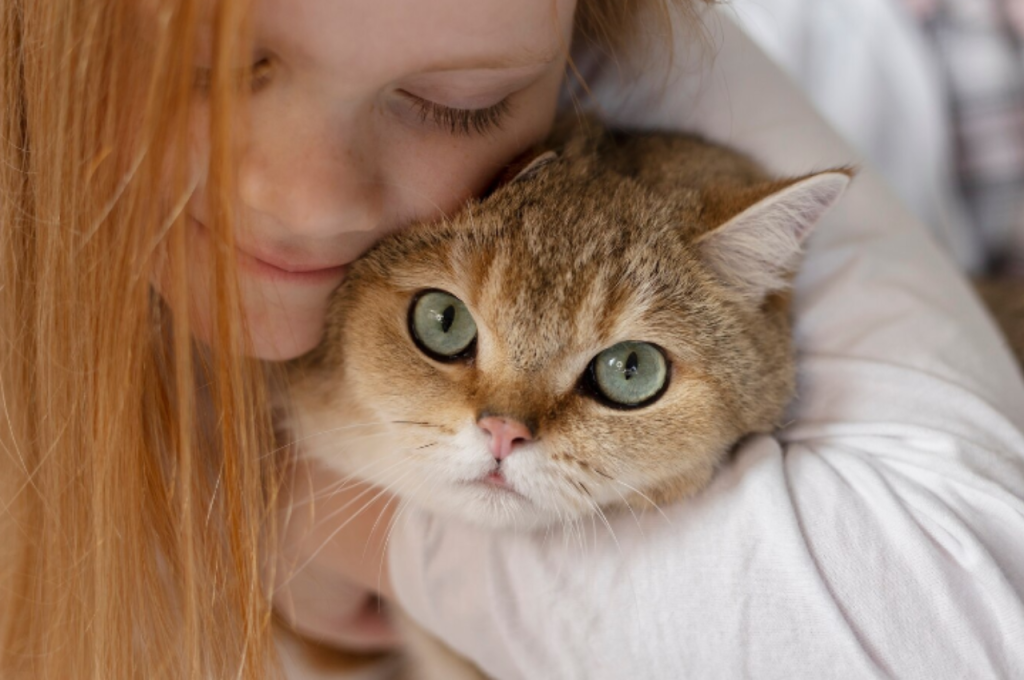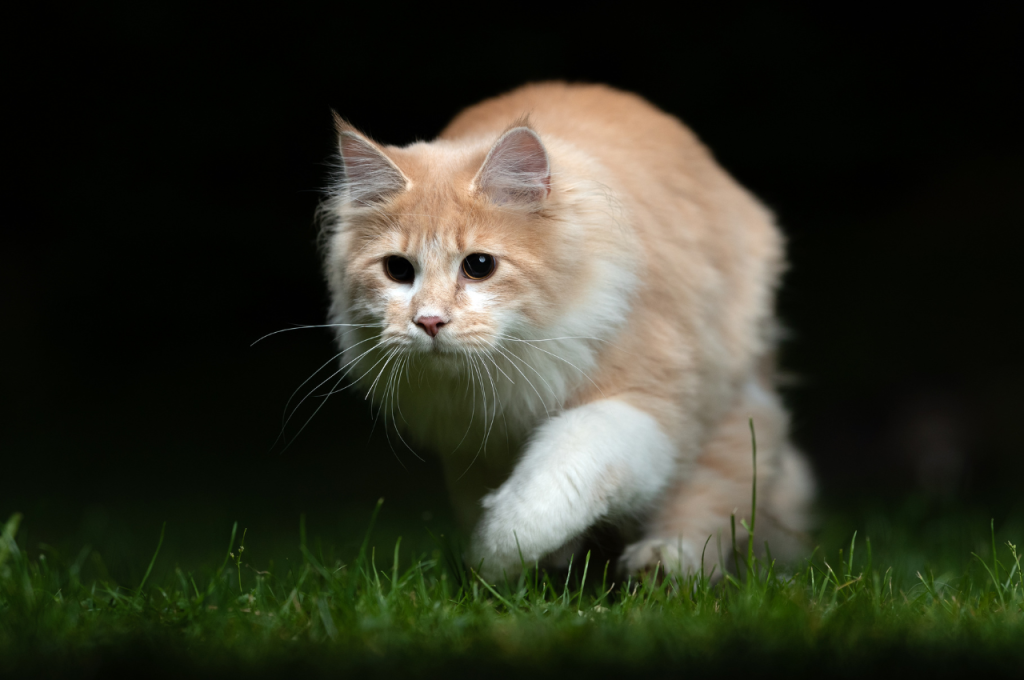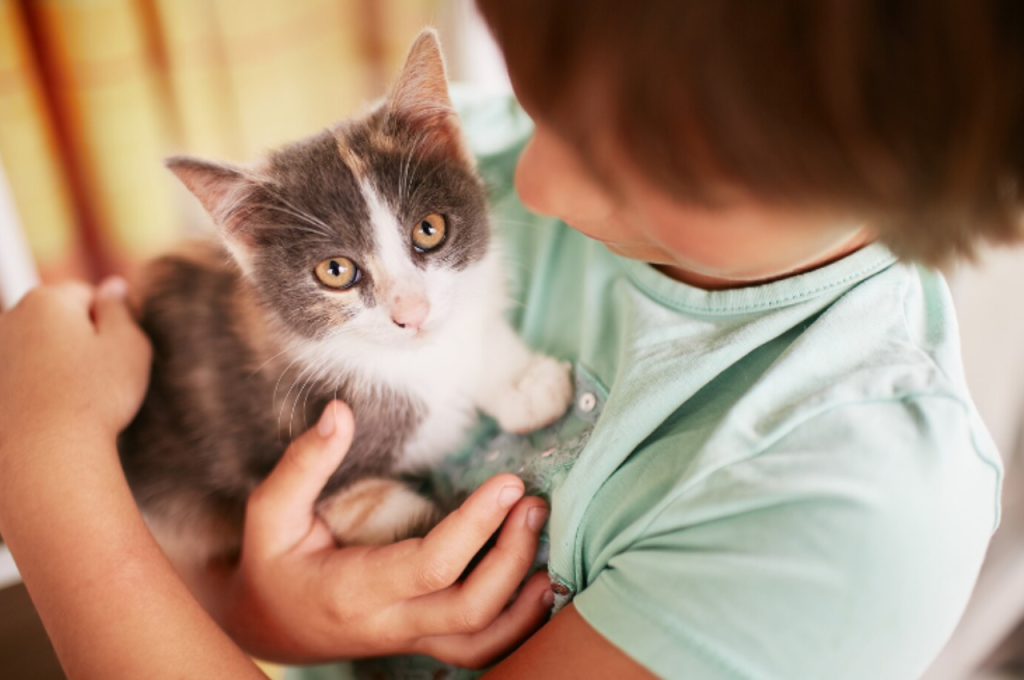Cats exhibit various behaviors that convey important messages. Understanding these habits can provide insight into their needs and emotions.
From kneading to head-butting, cats use body language to communicate with their owners and other animals. Observing these behaviors can help owners understand their cat’s mood, preferences, and overall well-being. By recognizing and interpreting these habits, owners can build a stronger bond with their feline companions and ensure their needs are met. Whether it’s the flick of a tail or the position of their ears, cats have a unique way of expressing themselves that is worth paying attention to.
Introduction to Feline Mystique
The enigmatic nature of cats is often reflected in their unique behaviors. Understanding cat habits and what they mean can deepen the bond between you and your feline friend. Cats’ habits, like kneading, purring, or grooming, often signify comfort and affection. Their nocturnal activities and sudden bursts of energy, commonly known as the “zoomies,” are rooted in their predatory instincts.

Observing and interpreting these habits provides insight into their emotions and needs, enriching your relationship with them. By learning more about cat habits and what they mean, you can better cater to their well-being and enhance your connection.
The Allure of Cat Behavior
The allure of cat behavior lies in its fascinating complexity. Cats knead to show contentment, purr when they’re happy or in pain, and twitch their tails when curious or agitated. Each habit, from head-butting to slow blinking, communicates a distinct message. By observing and interpreting these behaviors, cat owners can better meet their pets’ needs and enhance their well-being. This captivating aspect of cat behavior is why cats remain endlessly intriguing companions.
Importance of Understanding Your Cat
Understanding your cat’s habits is crucial for a healthy and happy relationship. Observing “cat habits and what they mean” helps you decode their behavior, such as purring, kneading, or sudden bursts of energy. Recognizing these habits can indicate your cat’s emotional state, health, and needs. For instance, excessive grooming might signify stress, while hiding could suggest illness. By understanding these habits, you can ensure your cat’s well-being, address issues promptly, and strengthen your bond with your feline friend. This knowledge fosters a harmonious living environment and enhances your ability to provide the best care for your cat.
Decoding The Purr
Cats are known for their mysterious and enigmatic behavior, and one of the most intriguing aspects of feline communication is their purring. Understanding the nuances of a cat’s purr can provide valuable insights into their emotional state and well-being.
Contentment and Comfort
When a cat purrs, it often indicates a deep sense of contentment and comfort. This soothing sound is a clear sign that your feline friend is feeling relaxed and secure in its environment. Whether your cat is curled up in a sunny spot or nestled in your lap, the gentle vibrations of its purring signal a state of serene satisfaction.
Healing Vibrations or More
While purring is commonly associated with contentment, it’s important to note that cats also purr in times of distress or illness. The healing properties of a cat’s purr have been widely studied, with research suggesting that the frequency of the vibrations may promote healing and pain relief. In some cases, a cat’s purring may serve as a self-soothing mechanism during times of discomfort or anxiety.
The Tale of The Tail
Discover the fascinating world of cat habits and what they truly mean in “The Tale of the Tail. ” Unveiling the secrets behind their tail movements and behaviors, this insightful blog post sheds light on the language of our feline friends.
Cats are fascinating creatures with a language all their own. From their purrs to their meows, they have unique ways of communicating with us. One of the most intriguing aspects of a cat’s communication is their tail. It’s like a secret code that can tell us a lot about how they’re feeling. In this blog post, we’ll explore the different tail positions and what they mean.
High-flying happiness
When a cat’s tail is held high and upright, it’s a sign of pure feline bliss. This position is often seen when a cat is feeling content, confident, and happy. It’s their way of showing off and saying, “Life is good!” If your cat greets you with a high-flying tail, consider it a warm welcome and a sign of affection.
Low-swung warnings
On the other end of the spectrum, a low-swung tail can signal that your cat is feeling uneasy or agitated. When the tail is held low and tucked between the legs, it’s a clear indication that something is amiss. Your cat may be feeling scared, threatened, or anxious. It’s important to give them space and try to identify any potential triggers that may be causing their discomfort. To help you better understand your cat’s tail language, here’s a quick breakdown of some common tail positions and their meanings:
- A gently swaying tail: Your cat is relaxed and content.
- A puffed-up tail: Your cat is scared or feeling threatened.
- A flicking tail: Your cat is excited or irritated.
- A lashing tail: Your cat is angry or aggressive.
- A twitching tail tip: Your cat is focused and ready to pounce.
Remember, each cat is unique, and their tail language may vary slightly. It’s essential to pay attention to the overall body language and context to fully understand what your cat is trying to communicate.
In conclusion, a cat’s tail is a fascinating and informative part of their communication system. By observing their tail positions, we can gain insights into their emotions and needs. Whether it’s a high-flying tail of happiness or a low-swung warning, paying attention to our feline friends’ tails can help us foster stronger bonds and ensure their well-being. So, the next time you see your cat’s tail in action, take a moment to decipher its message and respond accordingly.
Whisker Wonders
As cat owners, we often find ourselves fascinated by the mysterious behavior of our feline friends. One of the most intriguing aspects of a cat’s body is its whiskers. These long, sensitive hairs on their face, known as vibrissae, serve a crucial purpose in their daily lives. Understanding the significance of these whisker wonders can help us decipher our cats’ behavior and provide them with the care they need.
Spatial Awareness
Cats have an innate ability to navigate their surroundings with incredible precision. Their whiskers play a vital role in this spatial awareness. The whiskers are connected to nerve endings that send sensory information to the brain, allowing cats to detect changes in their environment. When a cat’s whiskers are extended forward, it indicates that they are exploring or assessing their surroundings. On the other hand, when their whiskers are pulled back against their face, it suggests that they are feeling threatened or cautious.
Mood Indicators
Just like humans, cats have moods that can vary throughout the day. Whiskers can serve as mood indicators, providing valuable insights into a cat’s emotional state. When a cat is content and relaxed, their whiskers are typically positioned forward and slightly to the side. However, if a cat is feeling agitated or fearful, their whiskers may be flattened against their face, indicating their discomfort. By observing the position of their whiskers, we can better understand how our cats are feeling and respond accordingly.
Moreover, whisker movements can also be a sign of excitement or anticipation. When a cat is excited, their whiskers may twitch or quiver, reflecting their heightened state of arousal. Similarly, when a cat is focused on something, such as a potential prey or an intriguing object, their whiskers may point forward, demonstrating their concentration.
Understanding our cats’ whisker wonders allows us to connect with them on a deeper level. By paying attention to the position, movement, and overall appearance of their whiskers, we can gain valuable insights into their spatial awareness and emotional state. This knowledge empowers us to create a nurturing environment that caters to their needs, ensuring they feel safe, secure, and loved.
The Nighttime Zoomies
Cat owners may be familiar with the phenomenon known as “The Nighttime Zoomies. ” These bursts of energy and playful behavior in cats often occur in the evening and can indicate that your feline friend is happy and healthy. Understanding cat habits like these can help deepen the bond between you and your pet.

Bursts of Energy Explained
Cats have unique habits, and one of the most common ones is the “nighttime zoomies.” This behavior is characterized by sudden bursts of energy that your cat displays at night. One minute, your cat is sleeping peacefully, and the next, they are sprinting around the house, jumping on furniture, and playing with toys. Although it can be amusing to watch your cat behave in this way, it can also be frustrating if you are trying to sleep. Here, we will explore the reasons behind this behavior and how to cope with it.
Coping with Nocturnal Play
There are several reasons why your cat may exhibit the nighttime zoomies. One of the most common reasons is simply due to pent-up energy. Cats are naturally active animals, and if they are unable to expend their energy during the day, they may do so at night. Another reason could be related to their hunting instincts.
In the wild, cats are nocturnal hunters, and their behavior may reflect this natural instinct. Whatever the reason, there are ways to cope with your cat’s nighttime play. One way to help your cat burn off energy during the day is to provide them with toys and playtime. Interactive toys that require your cat to chase and pounce are ideal. Additionally, creating a routine for your cat that includes playtime during the day and a calming activity before bed, such as grooming, can help them sleep better at night.
Another way to cope with your cat’s nighttime play is to create a safe space for them to play in. This could be a designated room or an enclosed area that is free of any breakable items or hazards. Providing your cat with a variety of toys and playthings in this space will encourage them to engage in physical activity and may help reduce their nighttime zoomies. In conclusion, the nighttime zoomies are a common behavior for cats, and while it can be entertaining, it can also be disruptive. Understanding the reasons behind this behavior and taking steps to cope with it can help ensure that both you and your cat get a good night’s sleep.
Eyes Wide Open: Windows to The Soul
Cats are known for their mysterious and mesmerizing eyes. Their eyes can convey a wealth of information about their mood and intentions. Understanding the meaning behind a cat’s gaze can help us connect with them on a deeper level. Let’s take a closer look at some common cat eye behaviors and what they reveal about our feline friends.
Slow Blinks and Trust
When a cat gives you a slow blink, it’s not just a random movement. In the feline world, this gesture signifies trust and contentment. By blinking slowly at you, your cat is expressing a sense of relaxation and comfort in your presence. Return the gesture by slowly blinking back at your cat to strengthen the bond of trust between you.
Dilated Pupils and Arousal
Cats’ pupils can dilate for various reasons, and arousal is one of them. When a cat is excited or stimulated, their pupils may enlarge to let in more light, allowing them to focus intensely on the object of their interest. It could be a toy, a bird outside the window, or even their favorite human. Understanding this behavior can help you gauge your cat’s level of excitement and provide appropriate stimulation.
Gifts of The Hunt
Cats are natural hunters, and their hunting instincts are deeply ingrained in their behavior. The way a cat interacts with its prey and the actions it takes afterward can reveal a lot about its instincts and social behavior. Understanding these behaviors can help us better understand our feline companions and strengthen our bond with them.
Predatory Instincts
When a cat brings you a “gift” such as a dead mouse or bird, it’s not just showing off its hunting skills. This behavior is a reflection of a cat’s natural predatory instincts. In the wild, cats are solitary hunters, and bringing back food to share is a way of demonstrating their ability to provide for their family or group.
Sharing The Spoils
Cats may also share their prey with other cats in their social group, especially if they are close and have a strong bond. This act of sharing reinforces social bonds and helps establish a sense of cooperation and reciprocity among the group members. It’s a way for cats to express their social connections and maintain harmony within their social unit.
Chattering and Birdwatching
When cats chatter and engage in birdwatching, it’s a natural behavior that stems from their hunting instincts. This behavior indicates their excitement and focus on potential prey, even if they’re indoors. Understanding these habits can provide insight into your cat’s predatory nature and help fulfill their hunting instincts through interactive play and toys.
Frustration or Anticipation
Chattering is a common behavior exhibited by cats while birdwatching. While chattering, cats make a distinctive chattering sound by rapidly moving their jaws and making a chittering sound. This behavior is often observed when cats spot a bird or any other prey, and they become excited. But the question arises whether this behavior is a sign of frustration or anticipation?
Vocal Mimicry Theories
Some researchers believe that chattering is a sign of anticipation, and cats are mimicking the sounds made by their prey. This theory suggests that chattering is a form of vocal mimicry that cats use to lure their prey closer to them. Other researchers propose that chattering is a sign of frustration, as cats are unable to hunt the birds due to being indoors.
What Does Chattering Mean
Chattering can mean different things for different cats. For some cats, it may be a sign of excitement and anticipation, while for others, it may be a sign of frustration. So, it’s essential to understand your cat’s behavior and the context in which they are chattering.
Why Do Cats Love Birdwatching
Birdwatching is a natural behavior exhibited by cats, and it’s in their genes. Cats are natural predators, and birdwatching triggers their hunting instincts, making them feel more alert and focused. Additionally, birdwatching provides mental stimulation for cats, which can help keep them active and healthy.

In conclusion, chattering is a common behavior exhibited by cats while birdwatching. It can be a sign of anticipation or frustration, depending on the cat’s personality and context. Understanding your cat’s behavior and providing them with mental stimulation can help keep them healthy and happy.
Embracing The Enigma
Unraveling the mystery of cat behaviors offers insight into their unique communication. From kneading to head bunting, each habit conveys a specific message about their emotions and needs. Embracing these enigmatic gestures enhances the bond between feline companions and their human counterparts.
Building a Deeper Bond
Cats are mysterious creatures that exhibit a wide range of behaviors. Understanding these habits can strengthen the bond between you and your feline friend.
- Observe your cat’s body language and vocalizations to decipher their emotions.
- Provide a stimulating environment with toys and scratching posts to keep your cat mentally and physically engaged.
- Spend quality time with your cat through play and cuddling sessions to nurture your relationship.
Continuing The Discovery Journey
Each cat is a unique individual with its own set of behaviors and habits. Embrace the enigmatic nature of your cat and continue to explore and understand their world.
- Stay curious and observant to uncover new insights into your cat’s personality.
- Respect your cat’s boundaries and create a safe space where they can express themselves freely.
- Celebrate the quirks and idiosyncrasies that make your cat a one-of-a-kind companion.
Frequently Asked Questions
Here are some commonly asked questions about cat habits and what they mean:
What Do The Behaviors of Cats Mean?
Cats use body language to communicate. A relaxed, slow-moving cat is content, while a tense, crouched cat is fearful or aggressive. Ears forward indicate interest, while flattened ears mean fear or aggression. Tail position can show mood, with a high tail indicating confidence and a low tail indicating fear or submission.
How Can You Tell if Your Cat Loves You?
Cats show love by purring, kneading, head-butting, and slow blinking. They also enjoy cuddling and following you around.
When to Worry About Cat Behavior?
You should worry about cat behavior if it suddenly changes or becomes aggressive, withdrawn, or exhibits destructive habits. Excessive meowing, changes in appetite, or litter box issues may also indicate a problem. Always consult a veterinarian if you’re concerned about your cat’s behavior.
What Are The Common Habits of Cat?
Common habits of cats include grooming themselves, napping for long hours, hunting for prey, marking their territory, and being active at dawn and dusk.
Conclusion
Understanding your cat’s habits can provide insight into their needs and emotions. By decoding their behaviors, you can strengthen your bond and ensure their well-being. Remember, each cat is unique, so observe and interact with them to build a deeper connection.
